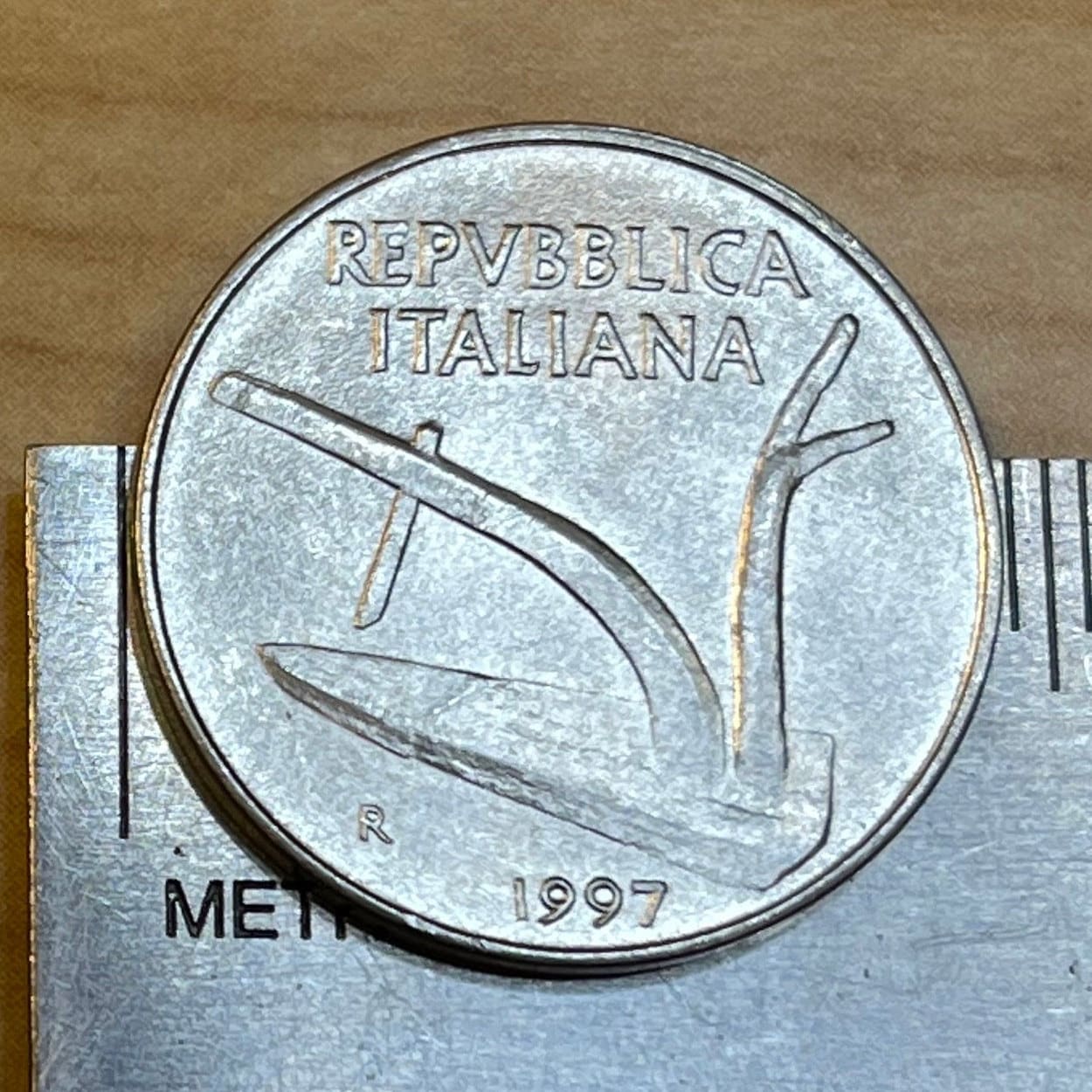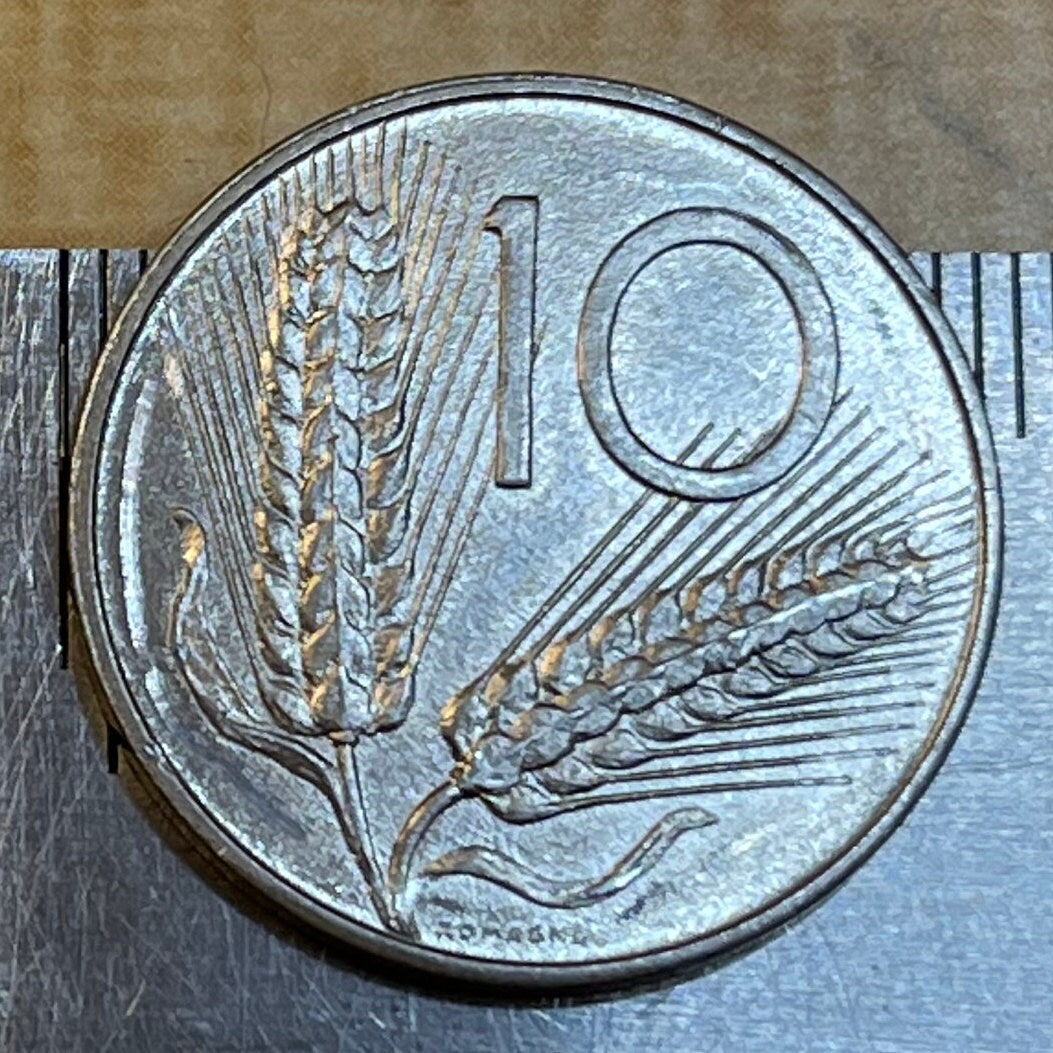elemintalshop
Ancient Plow & Wheat 10 Lire Italy Authentic Coin Money for Jewelry and Craft Making (Plough, Ard, Plowshare, Ploughshare)
Ancient Plow & Wheat 10 Lire Italy Authentic Coin Money for Jewelry and Craft Making (Plough, Ard, Plowshare, Ploughshare)
Couldn't load pickup availability
Ancient Plow & Wheat Ears 10 Lire Italy Authentic Coin Charm for Jewelry and Craft Making (Ard) (Plough) (Plowshare)
Obverse: Ancient plow (plough), lettering above, date below
Lettering: REPVBBLICA ITALIANA
Translation: Italian Republic
Reverse: Two ears of wheat dividing the coin's "10" value
Features
Issuer Italy
Period Republic (1946-date)
Type Standard circulation coin
Years 1951-2001
Value 10 Lire (10 ITL)
Currency Lira (1861-2001)
Composition Aluminium
Weight 1.6 g
Diameter 23.25 mm
Thickness 1.5 mm
Shape Round
Orientation Coin alignment ↑↓
Demonetized 02-28-2002
Number N# 728
References KM# 93, Schön# 93
Wikipedia:
Domestication of oxen in Mesopotamia and the Indus valley civilization, perhaps as early as the 6th millennium BC, provided mankind with the draft power needed to develop the larger, animal-drawn true ard (or scratch plough). The earliest surviving evidence of ploughing, has been dated to 3500–3800 BCE, on a site in Bubeneč, Czech Republic. A ploughed field, from c.2800 BCE, was also discovered at Kalibangan, India. A terracotta model of the early ards was found at Banawali, India, giving insight into the form of the tool used. The ard remained easy to replace if it became damaged and easy to replicate.
The earliest was the bow ard, which consists of a draft-pole (or beam) pierced by a thinner vertical pointed stick called the head (or body), with one end being the stilt (handle) and the other a share (cutting blade) dragged through the topsoil to cut a shallow furrow suitable for most cereal crops. The ard does not clear new land well, so hoes or mattocks had to be used to pull up grass and undergrowth, and a hand-held, coulter-like ristle could be made to cut deeper furrows ahead of the share. Because the ard left a strip of undisturbed earth between furrows, the fields were often cross-ploughed lengthwise and breadth-wise, which tended to form squarish Celtic fields. The ard is best suited to loamy or sandy soils that are naturally fertilised by annual flooding, as in the Nile Delta and Fertile Crescent, and to a lesser extent any other cereal-growing region with light or thin soil.
*******
As symbol of peace: Swords into Ploughshares
Wikipedia:
In agriculture, a plowshare (US) or ploughshare (UK; /ˈplaʊʃɛər/) is a component of a plow (or plough). It is the cutting or leading edge of a moldboard which closely follows the coulter (one or more ground-breaking spikes) when plowing.
The ancient phrase from the biblical Book of Isaiah, "to turn swords to ploughshares," is still in common use today. These ploughshares represent peaceful use of wartime capabilities.
Triangular-shaped stone ploughshares are found at the sites of Chinese Majiabang culture dated to 3500 BC around Lake Tai. Ploughshares have also been discovered at the nearby Liangzhu and Maqiao sites roughly dated to the same period. The British archaeologist David R. Harris says this indicates that more intensive cultivation in fixed, probably bunded, fields had developed by this time. According to Mu Yongkang and Song Zhaolin's classification and methods of use, the triangular plough assumed many kinds and were the departure from the Hemudu and Luojiajiao spade, with the Songze small plough in mid-process. The post-Liangzhu culture ploughs used draft animals.
Share


Great experience! Smooth transaction. Quality item! Thank you!
5 stars review from Hussain
5 stars review from Darlene

